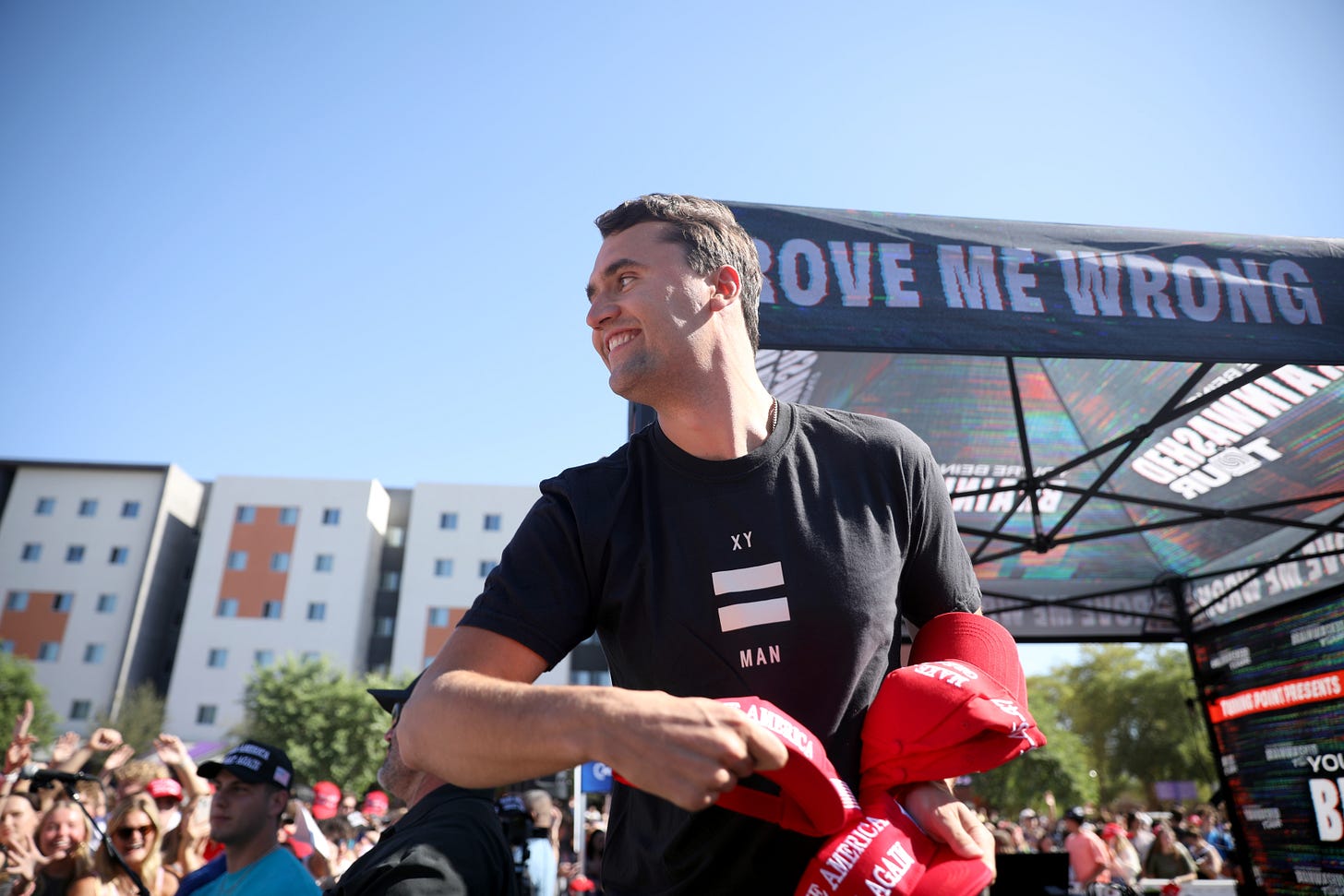Notes from the underculture
After the assassination of Charlie Kirk.

I have, through luck and will, thus far avoided video of Charlie Kirk’s assassination in Utah last week. Partly because I had long quit X, where the footage flowed freely; but I also deliberately scrolled away as soon as a clip on another service started rolling. Having already spent years watching and writing about killings as a reporter, I had long decided to leave the emotional burden of further witnessing to others where possible. But I also didn’t feel like being conscripted into the role of passive consumer of snuff footage that a killer chose to create for us, especially when alternative options of comprehension are readily available.
So I turned to the writers for my education on the nation’s biggest news story. I encountered a striking moment of third-person narrative reporting from a pair of young local reporters at Deseret News, Emma Pitts and Eva Terry, who were sitting a few rows from Kirk. Their account sufficiently conveyed the abject horror but also the spare humanity of the decisive moment:
“I’ll never get the image out of my head,” Pitts said. “It looked like a fountain of blood came out of his neck. His body went limp and then his eyes closed.”
Pitts and Terry said they grabbed each other and dove to the ground with the rest of the crowd. They said many of what they estimated was a crowd of several thousand were hugging each other.
Pitts suggested to Terry that they pray.
“We said prayers out loud for him and his family and for the safety of everyone there,” Pitts said. They then called their editors and continued to report on a news story that focused the attention of the world on Orem, Utah.
The reporters agreeing to pray, then getting to work, served as the fastening detail to me: The first moment when the public begins to reassert control over the gunman’s terror. The return of agency, by bystanders, is where you can mark the first return of life and the turning-away of death. Asked how people on scene were reacting, Pitts commented to NPR that “I have strangers coming up to me, asking if I can hug them all the time.”
As shocking as it all is, there is little new to remark upon here, apart from the Trump administration’s accusatory but incompetent hysteria in the early hours of the event, or the shameless McCarthyism against Kirk critics who spoke a little too honestly their feelings about a career partisan after his grotesque killing. In any act of terror the victims die first, followed quickly by the ability to think and speak plainly. Assassins are murderers but thieves too, carrying away the public comprehension. But only because we allow ourselves to be carried away.
A disturbed suspect has expectedly emerged, having allegedly inscribed references both to antifascism but also internet furry memes and Helldivers 2 on his rifle rounds. The killer’s cultural references may be fresh, but not the stench of grasping self-awareness by yet another a loser intruding mythically into public life. Here I recall the author Don DeLillo’s instant exhaustion with the would-be assassin of President Ronald Reagan, in Rolling Stone:
John Hinckley is a self-created media event. Hinckley lives in the stale air of the media. He is media-poisoned, a man drawn toward murder by a movie he saw, morbidly attracted to an actress he had never met. They are familiar now, men who choose victims based on their current popularity and accessibility. There is an element of the performing self in such acts of violence. Hinckley sees the act on television even as he commits it. …
This is a self-referring event. The man who performs the act comments on it at the same time. He knows in advance what our reaction will be. This knowledge and this reaction mysteriously find their way into the act itself. Hinckley makes us feel a particular disgust because he has brought our perceptions and interpretations into his moment of violence. His own sense of the crime is based on what he knows the world will say about it. It is a secondhand act, derivative, borrowed, used.
In Hinckley and the media, we find two forces that recognize their affinity at once. Made for each other, even in the way they interpret their actions without reference to the clear and terrible result.
It’s in these moments you recall the long history of American assassination going back to John Wilkes Booth — an actor, who shot Lincoln at a theater, jumped onstage, and delivered a line. There’s only so much you can say about this mediocre horror franchise and its increasingly contemptuous sequels. We sit and watch and root for life, for survival. But sometimes the only thing a captive audience can do is reach for each other in the dark.


The chaos afterward is certainly notable.
I think criticisms of Kirk are better left after more breathing space develops, and think it is both a mistake and in bad taste to criticize his politics so soon. It also just incites more of the vile demonizing of Democrats, and anything seen as left. That demonization is what needs to be condemned.